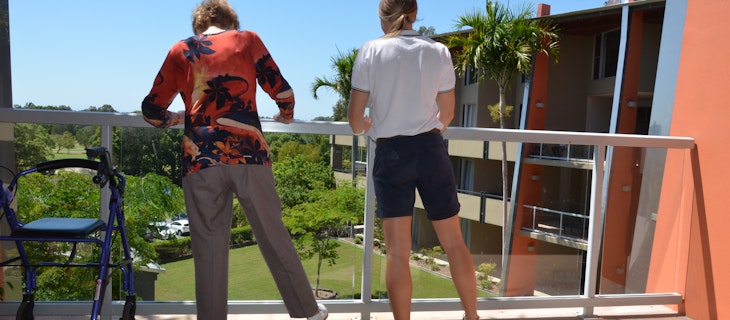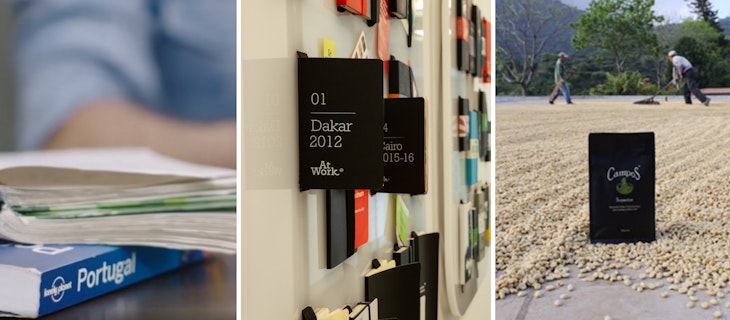
Bottled lightning - How Wellcom manages remote creativity
Creativity comes in many forms, from painting a masterpiece or shaping a garden, to creating films that excite and delight an audience, and creativity is a crucial part of how many businesses reach their audience.
The creative process is a team affair, it takes time and effort in brainstorming, whiteboarding, prototyping, planning, production - all working together on a common goal.
So what happens to a business when that process is suddenly disrupted? Global media company Wellcom was faced with this challenge when the COVID-19 pandemic forced them to shift to an entirely new way of working almost overnight.
Wellcom works with global brands including retail and corporate customers to create original films, billboards, and campaigns. They’re a creative and digital agency that started making advertisements in the days of Macintosh computers and camera film.
They not only handle huge volumes of data and content, they also create and safeguard their clients’ most valuable asset - their creative ideas.
Since the pandemic hit, Wellcom is finding new ways to drive the creative process and continue adding value to clients, while buckling down and doing it from basements, home offices, kitchen benches and balconies.
Connecting the dots
At the centre of what Wellcom does is connecting ideas, people and assets. Bud Peart, Head of Creative put it best, “We have all these photography and video teams and shooting in different locations, and we needed to link them together in a more solid way than ferrying hard drives all over.”
As a business that started small and grown to cover a global footprint, the team have tried to adopt more technology and enable creativity within their walls. But that’s also meant their best and brightest have been tied to the office to get work done.
Bud said, “We’ve never really had any form of working from home arrangements. But I think it really transforms what we can do, how we can engage with freelancers and specialists on a project basis, as well as what we can offer staff in the future.”
By moving out of the office Wellcom forced a change of perspective, and that opened new avenues for the team to experiment. “We can have teams that are disparately located, whether they're in the United States or Australia or working from home two days a week, we actually have now the platform that enables it that we never had before.” Said Bud.
For Wellcom, Australia has been a testing ground, and the COVID-19 crisis was a catalyst.
Tech before spec
“When we started there were 12 of us, and now it’s 600.” Said Mark Sweetnam, Chief Technology Officer at Wellcom worldwide. “We were doing production work for all of the advertising agencies and doing what we could with our own networking and old Macintoshes”.
At the start of 2020, Wellcom now had nine different offices all over the globe from Sydney to Melbourne, London and New York.
“As time went on we were working more with corporate clients, and having our own people embedded in those premises, and needed to keep communicating with them and keeping everyone working together”
What gummed up the works were approvals and collaboration, making sure that when the designers needed a photo, or Mark’s client needed the final cut, they had it ready to go.
“We had our own data centres being backed up off-site, but that didn’t keep with the times as the rest of the business moved forward” Said Mark.
“At the same time we didn't want to put additional efforts into building a new production environment when Dropbox was going to meet our needs.”
The team needed a solution that would allow their teams to work together on a variety of files, from different operating systems, send previews and approvals to clients and connect the team as if they were all in one office.
“What was really nice thing about moving across to Dropbox is that we were able to centralise that data and then provide secure access to all of those sites to work on the content that they needed”
By working through the Wellcom team’s current solutions, and what they wanted to get out of Dropbox, the team built an initial test environment before rolling out the full-scale version. This meant they could try the features and make adjustments before diving in.
When they did roll out the full suit, the Wellcom team were able to get Dropbox up and running across their Australian teams in just seven days, and being the first region to make that leap, the team are looking at the successes to now roll out globally.
The seven-day turnaround
Duncan Harcourt, Operations Director AU/NZ spends his time dealing with the day-to-day of the different teams in Wellcom and their clients.
For Duncan, the productivity of the business was paramount, and making sure all the pieces move like a well-oiled machine.
Duncan told us how the disruption caused by COVID-19 and having to relocate their teams from the office to remote forced them to change their attention and at how the business could take control of this uncontrollable situation. “There was a point when everybody understood the severity of COVID-19, that it was not just something that you were looking at in China and in Europe but that it was actually going to hit us and we had to move fast.”
Duncan and the team decided to go all-in with Dropbox to connect their different teams across Australia and within the client businesses. “Within seven business days we were working from four sites into 30 sites for one particular client”
That experimental mindset led the team to extend their collaboration technology along to clients to enable review and approval of final work.
“Our clients work quite closely with our files in Dropbox. That’s when we knew we’d nailed it, when we had one of our biggest customers say ‘this is fantastic’.”
For Wellcom, the challenge has always been how to be creative under pressure, how to share big ideas on a global scale, and how to connect people in different parts of the world.
What began as a challenge for Wellcom, distributing teams everyone outside of the office, has become an opportunity for the business. It’s meant the team can now be more agile, work with even more people and give their staff more freedom to work how they want.
If you have questions about this story or want to speak with a member of the dropbox team, you can reach us at drop-everything@dropbox.com

